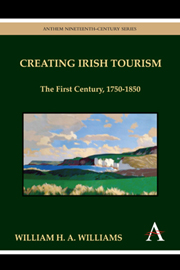Chapter 8 - Tourist Semeiotics, Stereotypes and the Search for the Exotic
from Part III
Published online by Cambridge University Press: 05 March 2012
Summary
Brogues and Blarney—The Semeiotics of Language
From its earliest days, tourism has primarily involved the search for difference. Tourists leave home to experience something different, even when they insist on enjoying all the comforts of home. Ironically, however, they may find unpleasant—sometimes even frightening or disgusting—the very the differences they've set out to explore. Nevertheless, they travel to encounter sights and sensations considered unique to the host country. In this respect tourists are, as Dean MacConnell and Jonathan Culler have argued, semioticians, looking for signs of Frenchness, Englishness or Irishness. Inevitably, many such signs derive from and point back to stereotypes visitors hold regarding the host nation and its people. Moreover, this search for signs of foreign difference based on stereotypes manufactured back home may not reflect native realities. As Johathan Culler suggests, a “chanteuse” in Paris singing in English with a French accent may seem more “authentic” to an American tourist than if the woman sang in French. Similarly, tourists scanned the behavior, dress and speech of their Irish hosts for “authentic” signs of Paddy—based on stereotypes of British invention
Speech was one potential source for Irishness. Since many Irish stereotypes had been propagated in the theater, British tourists expected their hosts to sound like the Stage Irishman. However, in crossing the Irish Sea British visitors crossed several linguistic frontiers, taking them beyond Paddy's Stage-Irish drolleries.
- Type
- Chapter
- Information
- Creating Irish TourismThe First Century, 1750–1850, pp. 153 - 164Publisher: Anthem PressPrint publication year: 2010



